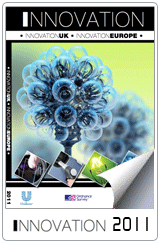Navigating the Maze: A Comprehensive SWOT Analysis of Modern Classroom Solutions
Step into the fascinating convergence of education and generation, where age-antique school rooms metamorphose into vibrant gaining knowledge of arenas powered with the aid of current solutions. Join us on an exploration through the intricate labyrinth of opportunities as we delve into a thorough SWOT evaluation, unraveling the inherent strengths, weaknesses, possibilities, and threats embedded in contemporary study room solutions.
SWOT Analysis of Modern Classroom Solutions
At the core of modern education, a diverse range of technological tools is employed to elevate the learning experience. From interactive learning platforms to adaptive software, these innovations collectively underpin the landscape of contemporary education. It's essential to recognize that technology transcends mere functionality; it acts as a catalyst for transformative change. Beyond being a tool, technology holds the promise of personalized learning, increased engagement, and the necessary preparation of students for the intricacies of the digital age. Join us in this insightful excursion into the evolving landscape of educational technology.
- Strengths
In the realm of modern classroom solutions, technological integration stands as a cornerstone. Interactive learning platforms transform classrooms into dynamic hubs where students actively engage with learning materials. Simulations breathe life into historical events, and math problems become thrilling challenges. The role of smart boards and educational apps further enhances this interactive experience, bridging the gap between theoretical concepts and real-world applications.
Customization and personalization play a pivotal role, offering adaptive learning platforms that tailor experiences to individual needs. These platforms analyze progress, identify areas for improvement, and deliver personalized content, allowing each student to absorb information at their own pace.
Data analytics emerges as a powerful tool, tracking student performance and providing teachers with valuable insights for data-driven decision-making. This dynamic feedback loop shapes the learning experience in real-time, ensuring a more responsive and tailored educational journey.
- Weaknesses
Technical challenges pose occasional disruptions as technology enhances learning. Addressing technical glitches becomes essential, necessitating the development of troubleshooting skills to maintain an uninterrupted educational journey. The rapid evolution of technology demands continuous educator training to ensure proficiency in utilizing these tools, emphasizing the importance of staying current in a rapidly evolving digital landscape.
Cost implications present challenges, from initial setup costs to ongoing maintenance and upgrades. Strategizing budgets becomes crucial for ensuring accessibility without compromising quality. Inclusivity concerns highlight the digital divide, underscoring the importance of concerted efforts to bridge gaps and ensure equitable access to technology for all students.
- Opportunities
The upswing in online education provides an avenue for adaptable learning, granting students the authority to set their own learning rhythm and access resources from virtually anywhere. Meanwhile, hybrid learning models, harmonizing traditional and online methods, provide a well-rounded approach that accommodates various learning preferences.
Advancements in AI and machine learning promise more sophisticated adaptive learning technologies, tailoring educational content with unprecedented precision. The future envisions every lesson customized to unique learning styles, fostering a deeper understanding of subjects. Global collaboration becomes feasible through modern solutions, connecting students globally and fostering cultural exchange through online platforms.
- Threats
Security and privacy concerns arise as education moves online, demanding robust measures to protect sensitive student information. Striking the right balance between data-driven insights and privacy safeguards becomes imperative.
Overreliance on technology poses challenges in maintaining a balance with traditional teaching methods. Preserving interpersonal skills remains crucial for holistic development, emphasizing the need for technology to complement, not replace, human interactions. Addressing educator resistance and implementing strategies for smooth integration are vital considerations in navigating potential hurdles in adopting technology-driven classrooms.
In navigating the maze of modern classroom solutions, we've explored the strengths that make learning dynamic, the challenges that demand creative solutions, the opportunities that shape the future, and the threats that necessitate careful consideration. With each stride in technological advancement, the educational terrain undergoes a transformation. Embracing these changes becomes our gateway to preparing for the myriad challenges and opportunities that lie ahead in the future.
In conclusion, the comprehensive SWOT analysis serves as a compass, guiding students, educators, and policymakers in making informed decisions about the integration of modern classroom solutions. Embrace the opportunities, address the challenges, and embark on this transformative journey towards a technologically enriched educational future.












